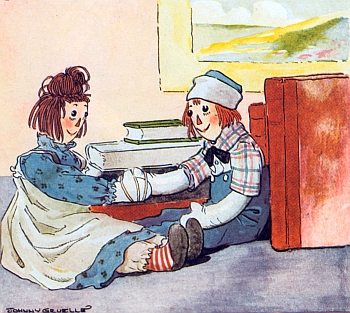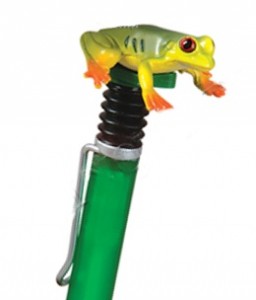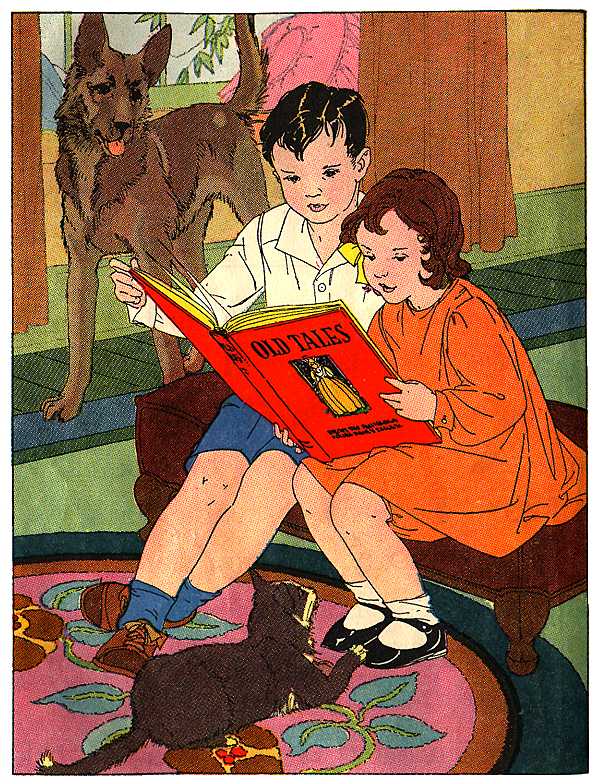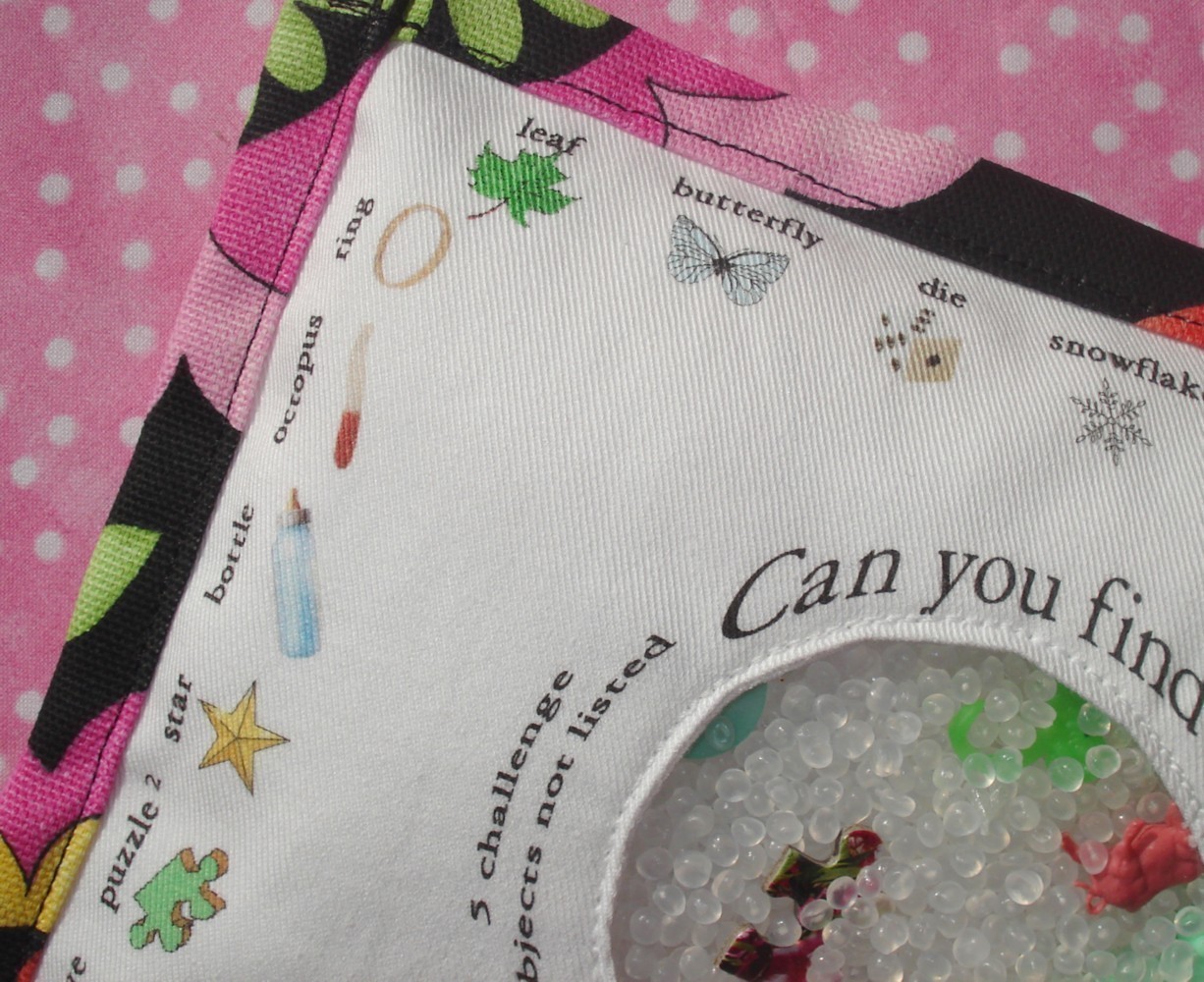The Washington Times reported on Friday on what it says is a little-noticed provision in draft cap-and-trade legislation (PDF) authored by Reps. Henry Waxman (D-Calif.) and Edward Markey (D-Mass.): new authorization for “citizen suits” to challenge government inaction on climate change. The bill would confer such standing, according to the article, on anyone “who has suffered, or reasonably expects to suffer, a harm attributable, in whole or in part,” to such inaction. However — in an apparent concession made some time ago to Republican lawmakers — the article also says that total payouts by the government would be limited to the comparatively minor amount of $1.5 million per year. Attorneys’ fees payable to prevailing plaintiffs, however, will presumably be subject to no such limit. More: Carter Wood also discovers new litigation powers for state AGs tucked into the bill; Marlo Lewis, CEI “Open Market”; Deputy Headmistress.
Posts Tagged ‘Henry Waxman’
CPSIA: Things I learned at the rally
Last Wednesday’s CPSIA rally at the Capitol drew an overflow crowd of hundreds, with thousands more reportedly watching from around the world via webcast. Many speakers had powerful stories to tell, and cameras from CNN and ABC were on hand to record them; AP mentioned the event in covering the dirtbike-ban story. There is, as you might imagine, no way to upstage a six-year-old motocross champion who declares from the podium, “I promise I won’t eat my dirt bike”.
A few things I learned by attending:
- Ordinary bikes (not the motorized kind) are clearly out of compliance with the law because of the leaded brass in certain components, and have been given no exemption. I’m still wondering why the CPSC directed the motorbike dealers to tarp over their inventory but did not do the same with the ordinary-bike dealers. Earlier here; much more (PDF) in this CPSC submission by Mayer Brown for the Bicycle Product Suppliers Association.
- Until I saw their handout leaflet, it hadn’t sunk in that the non-profit and charitable giants in resale, including Goodwill, Salvation Army, Easter Seals, Volunteers of America, and St. Vincent de Paul, have banded together in a Donated Goods Coalition. Good for them, and I hope someone listens.
- Even blogging the subject as much as I have, I’ve somehow said almost nothing about CPSIA’s requirements for batch numbering, labeling and tracking of kids’ products, due to hit later this year. It seems these requirements all by themselves will suffice to wipe out small producers in droves even if the crazy testing requirements can somehow be made sane. A few write-ups touching on the subject: Handmade Toy Alliance (Word document), Kathleen Fasanella/Fashion Incubator, Publisher’s Weekly.
- The rally happened because of the efforts of grass-roots business people around the country, above all Rick Woldenberg of Learning Resources. (The story of the Oregon delegation could stand for that of many others.) Motorbike people were much in evidence. Also present: people from trade associations from regular businesses not been much heard from in the CPSIA furor of recent months, including makers of shoes and footwear, cribs, and even household cleansers, all of whom turned out to have stories to tell. Who knew there was a whole association specializing in the little items you get when you put in the quarter in the vending machine and turn the crank?
- Kids’-book author (and valued commenter) Carol Baicker-McKee was there and gave a superb talk, making effective use of a copy of Orwell’s 1984. Otherwise, however, among groups deeply affected by the legislation, the book and library trades were conspicuous by their absence. I wasn’t the only one who noticed this; so did Publisher’s Weekly.
- I finally got to meet face to face many persons who have been favorably mentioned in these columns over the past three months. I was not surprised to find a whole lot of nice, dedicated people, the sort of people you’d want to be making products for your children to use. You, Reader, would have enjoyed meeting them too.
- Many members of Congress spoke. All were Republican, and a few were pretty good. For better or worse (maybe some of each) there was a minimum of partisanship, with scant mention of the reports that the Democratic House leadership had ordered members not to attend. Several lawmakers minimized the institutional role in the debacle of Congress (which passed the law last year almost unanimously), instead seeking to throw the blame onto the CPSC’s management, which put them surprisingly close to the position of Henry Waxman himself. One GOP member said it was important to be nice to the Democrats and not alienate them, since they held all the power.
 This may have been good advice, but I was still a little surprised.
This may have been good advice, but I was still a little surprised. - Amid a great deal of talk about unintended consequences, very little was said about there being actual adversaries out there, who know quite well what the law is doing and support it anyway. If more than a word or two was breathed about the roles of Public Citizen, PIRG, or the various members of Congress who are actively hostile on the issue (and not just “needing to be educated”), I missed it. Which meant (it seemed to me) that some of the good people who’d taken the trouble to come to Washington were going to be surprised and perhaps unprepared when they discovered figures out there like, oh, just to pick randomly, Illinois Sen. Dick Durbin, whose positions are not so much unreflected-on as deeply hostile (and with mysteriously unsourced numbers too).

Speaking of which, Consumers Union, publisher of Consumers Reports, confirmed once again that it falls into the “hostile” and not merely “unreflective/ uninformed” category with this deplorable hatchet job, which provoked a slew of angry, substantive comments; see also blog posts including those of Carol Baicker-McKee and Sheeshamunga.
More rally coverage: Domestic Diva, Polka Dot Patch.
Public domain image: Yankee Mother Goose (1902), illustrator Ella S. Brison, courtesy ChildrensLibrary.org.
CPSIA and paper goods: it’s not just books

In a plea for relief from the law, the printing industry reminds us that the world of printed material for children is a big and diverse one: any exemption narrowly drawn to cover bound books alone will expose to the law’s full and often prohibitive rigor a whole world of paper and paperboard wall posters, party invitations, thank-you cards, educational pamphlets and supplements, puzzles, leaflets, Halloween and Thanksgiving decorations, writing pads, folders and other back-to-school supplies, stickers, origami paper, Sunday school collection envelopes, mazes, score-keeping tallies, tracts, calendars, maps, home-school kits, Valentines, sticky notes, napkins and placemats, trading and playing cards, and much more. (Update: more from PIA).
Relatedly, Valerie Jacobsen narrates “a teacher’s dilemma”:
This teacher said that if she brought her own classroom into compliance, she would lose most of her carefully collected library and many more educational supplies that she finds very helpful. She said, “I guess our whole shelf of microscopes would have to go, too.”
This teacher is working to give her students a rich, well-rounded education and she finds older books very useful in her classroom. Meanwhile, her experience confirms my own: children just don’t eat books.
Jacobsen wonders whether Henry Waxman has talked to many teachers about the law, and whether it would change his mind if he did.
Another group hit by the law, many of whom sell in smallish quantities not well suited to amortize the costs of a testing program, are the suppliers of equipment for school science programs. Is there a “Teachers Against CPSIA” group yet? And if not, why not?
CPSIA: getting Washington’s attention

Given that nearly every member of Congress voted for CPSIA last year, it’s not surprising that that body of lawmakers was slow to respond to reports of the law’s catastrophic consequences. It’s beginning to happen now, though. Republicans have been in the lead, the latest sign being a strong letter from ranking House Commerce minority members Reps. George Radanovich (R-Calif.) and Joe Barton (R-Calif.) asking for a hearing. The motorcycle/powersports issue has also kindled widespread interest from Hill members (example: Rep. Michael Simpson, R-Idaho).
On March 4 there was a welcome break in the ice on the Democratic side as well. Rep. John Dingell (D-Mich.) sent a letter to the commissioners of the CPSC that, although cautiously worded, acknowledges many of the reports of calamitous consequences from around the country, something that his colleagues Rep. Henry Waxman (D-Calif.), Rep. Bobby Rush (D-Ill.) and Rep. Jan Schakowsky (D-Ill.) have been unwilling to do (when not dismissing those reports as based on misinformed or uninformed rumor). Of course, there is famously no love lost between Dingell and Waxman, who ousted him as Commerce chair. But Dingell’s stand could give cover for other Democrats to join in heeding the public outcry as legitimate. That letter in turn has prompted many CPSIA critics to write Dingell letters in hopes of arming him with more facts and arguments on the law’s ill effects: see in particular Rick Woldenberg and Wacky Hermit.
Waxman, for his part, has announced his intent to hold no hearing on the law until the Obama Administration installs a new chair at the Consumer Product Safety Commission. That serves the multiple functions of 1) stalling (while more small enterprises are driven out of business and thus are neutralized as political threats); 2) reinforcing the impression that the ball is in someone else’s court on addressing the law’s harms; 3) assisting in orchestrating whatever hearing is eventually held, since he expects an ally of his own to be installed as CPSC chair (the ultimate nightmare for CPSIA critics in that job would be someone like Pamela Gilbert, the class action lawyer, former plaintiff’s-lawyer lobbyist, and longtime Litigation Lobby figure who ran the Obama transition effort for the agency).
The membership of the House Energy and Commerce Committee, by the way, is listed here (hit “membership”; scroll to “Subcommittee on Commerce, Trade, and Consumer Protection” to find the members most directly involved). The membership of the Senate Commerce Committee is listed here and that of the Subcommittee on Consumer Protection, Product Safety and Insurance here.
Some miscellaneous weekend reading about the law: John Markley, Bureaucrash; Michael Maletic (Weil Gotshal & Manges), Republican National Lawyers Association; Ed Driscoll, Pajamas Media.
Public domain graphic: Grandma’s Graphics, Ruth Mary Hallock.
CPSIA chronicles, March 4
[Broken link on CPSC surveillance program fixed now.]
- The internet is a-hum with reactions to a proposal by West Virginia state representative Jeff Eldridge (D-Big Ugly) to ban Barbie dolls “and other similar dolls that promote or influence girls to place an undue importance on physical beauty to the detriment of their intellectual and emotional development.” That idea is predictably going nowhere (at least in West Virginia: Montpelier, Vt. is said to have voted a Barbie ban*), but Eldridge can perhaps take consolation in that CPSIA has already (with virtually no media taking note of the fact) banned the sale of vast numbers of vintage Barbies that pose equal dangers of symbolic or psychological impairment, if not of actual physical dangers. This 1999 New York Times piece describes how Mattel was “beginning an effort to eliminate” the use of polyvinyl chloride (PVC) compounds in the dolls, and that environmental activist groups contended that PVC often included lead as well as (less surprisingly) the plastic softeners phthalates, some but not all of which are banned by the law.
 As Denise Van Patten noted in an About.com write-up in January, it is not clear what old dolls are still going to be lawful to sell, distribute or give away under CPSIA, if they cannot be fit into the “adult collectible” exception that covers items so expensive they will be kept out of children’s hands. Soft plastic is only the beginning of the problem. Most older dolls have paint as a component — often only in the rendering of the eyes, but that’s enough to count as a resale red flag under the CPSC’s Feb. 9 guidelines. Hair and dyed fabric, both of unknown composition? Buttons or snaps in the garment, or worse yet, rhinestones? About the only such plaything a thrift shop would not advised to discard under the guidelines would be an unpainted and unvarnished rigid humanoid figurine of raw wood or cast aluminum. If your child does find one of those on a thrift store shelf, she’s welcome to cuddle it all she pleases.
As Denise Van Patten noted in an About.com write-up in January, it is not clear what old dolls are still going to be lawful to sell, distribute or give away under CPSIA, if they cannot be fit into the “adult collectible” exception that covers items so expensive they will be kept out of children’s hands. Soft plastic is only the beginning of the problem. Most older dolls have paint as a component — often only in the rendering of the eyes, but that’s enough to count as a resale red flag under the CPSC’s Feb. 9 guidelines. Hair and dyed fabric, both of unknown composition? Buttons or snaps in the garment, or worse yet, rhinestones? About the only such plaything a thrift shop would not advised to discard under the guidelines would be an unpainted and unvarnished rigid humanoid figurine of raw wood or cast aluminum. If your child does find one of those on a thrift store shelf, she’s welcome to cuddle it all she pleases. - Carol Baicker McKee is a children’s book author and illustrator who commented eloquently (more) on one of our earlier posts about books. Now she has a great post explaining why, although she “never used to think of myself as an activist,” she’s thrown herself into the fight to change this law. As she points out, some things changed, but other things didn’t change, when the CPSC announced a short safe list of presumptively lawful material for children’s products along with a one-year stay on many testing requirements (but not on the banning of goods that flunk the thresholds). She explains why “the stays provide only the illusion of relief,” and that “when the stay ends a year from now, the destructive testing provisions will still go into effect for all children’s products except the small percentage that have been given a reprieve – the costs of that testing will force the remaining small businesses that have limped along this year into oblivion (and the [requirement for] destructive testing will obviously signal the end of one of a kind products).” Read the whole thing.
- In a classic 1850 pamphlet, Frederic Bastiat writes of “what is seen, and what is not seen” when people recommend government solution to a problem. Deputy Headmistress writes of “what Congress didn’t see“. More: Patrick Stephens on a similar theme last month.
- A Georgia newspaper quotes CPSC spokeswoman Arlene Flecha as saying that “her agency will have inspectors make unannounced visits to stores throughout the country and will randomly conduct tests on products.” And if you’re wondering about the CPSC “Internet surveillance project”, in which agents of the commission pose as consumers in order to
trapdetect persons selling forbidden goods on eBay or Craigslist, you can find out more about that here (link fixed now). - At the Heritage Foundation’s InsiderOnline blog, Alex Adrianson has a detail-filled though not lengthy post that would make a good short introduction to the subject to send to (say) a lawmaker.
- Allison Loudermilk at the How Stuff Works blogs takes a look at the law’s heavy impact on thrift stores (“the selection at your local thrift store just got a whole lot slimmer”), while the PTA Thrift Shop of Carrboro, N.C. regrets to inform its customers that it’s out of kids’ resale entirely due to the law; things are only a little better in Salem, Ore. Manager Lisa Sonnek of the York, Nebraska Goodwill has pulled all the children’s clothing, toys, furniture, and pre-1985 books, in accord with policy from above, but has put aside “some clean children’s clothing, in anticipation of the policy being modified in the near future”. Dunno – that might depend on Henry Waxman’s heart melting or something.
*Although numerous online sources report as fact a Montpelier Barbie “ban”, commenter Barb says it’s far from clear that the reports have much of a factual basis.
CPSIA chronicles, February 27

- Finally! Today’s Boston Globe covers the thrift-store calamity:
In recent weeks, Goodwill pulled all children’s merchandise from its nine stores in the state. Thrift chain Second Time Around eliminated kids’ clothing from several of its 16 shops. St Vincent de Paul is currently removing children’s clothing with metal zippers, buttons, and painted fabrics from its processing center, which sends out merchandise to its six stores in Massachusetts.
It’s exactly the sort of coverage that’s been overdue in the biggest newspapers since Feb. 10: well-reported, making clear the human costs of the law for both cash-strapped shoppers and charitable sponsors, and including words like “devastating” and “heartbreaking”. And on page one.
- If you missed it yesterday, Overlawyered gets results! Although sometimes the opposite of the kind we intend. Yesterday we hailed as a breakthrough the House Small Business Committee’s willingness to hold a hearing next week on the costs of CPSIA. Within a few hours, as Rick Woldenberg relates, Congressional staffers hastily put out word that they were canceling the hearing and that the idea is “not likely to ever be brought back”. There’s no way for us to know just who placed the phone call, but odds are good it was someone who realized that letting people from around the country get in front of a microphone and talk about this law’s effects would not exactly do wonders for the image of Henry Waxman, Bobby Rush, Jan Schakowsky, Public Citizen, PIRG, or their allies. More on the cancellation from Rick Woldenberg, who reports that this is the third time he’s been disinvited from Capitol Hill testimony. Sounds like someone really dislikes the message he would deliver.
- Hair bow makers on the verge of a nervous breakdown.
- The Examiner, which has a wide readership in Washington, D.C., San Francisco, and other cities, is out today with a great editorial on CPSIA which also generously directs readers to this site and its “chilling” reports. It concludes: “This law is an utter disaster. Congress ought to fix it, immediately.” The Examiner also quotes Sen. Mark Pryor (D-Ark.), one of the law’s sponsors, as saying “the law allows the CPSC to make ‘commonsense exceptions’ to anti-lead requirements.” This is not the first time I have been obliged to wonder whether Sen. Pryor actually has a close familiarity with the terms of the bill he helped guide to passage, and if not, whose summaries he has been relying on when he talks to the press.

It is precisely because the law does not confer on the CPSC any “commonsense exception” authority that the commission was obliged to turn down the makers of kids’ minibikes in their plea for an exemption the other day. Same for many other instances that could be cited, such as the pre-1985 books and the size 10 winter coats with zippers and snaps that are being yanked from thrift store shelves. Had the commission such a “commonsense exception” discretion, it would almost certainly have acted by now to defuse these sources of public outcry. To repeat the question: who does Sen. Pryor rely on for his briefings? - Speaking of products with vanishingly low risk of poisoning that have trouble obtaining commonsense exemptions, we’ve been remiss in not staying on the case of ballpoint pens, mentioned in our Feb. 6 and Feb. 13 roundups. Deputy Headmistress has quite a bit more on the legal limbo occupied by the writing implements, which appear now to be unlawful when intended primarily for under-12 use. And visitor “Scott” wrote last week in our comments section:
What still amazes me is that the story about ballpoint pens being in violation of the CPSIA isn’t getting more notice. The CPSC admits that ballpoint pens intended for children are covered. As it happens, the US trade association for the makers of pens, pencils and erasers has sent a letter to the CPSC that ballpoint pens are not-compliant and no existing alloy satisfies the lead limits. It may take 2 years to develop an alloy, if one exists. I can only conclude that there must be very very very many stores not in compliance and ‘poisoning’ our children with lead. Are these stores not facing strict liability and risking felony criminal liability including 5 years in prison and $250,000 fines? The stay by the CPSC doesn’t help the pen-makers or sellers, because they’re in knowing violation of the lead limits. All they can hope for is that none of the 50 state attorney generals decides to prosecute what would appear to be a slam-dunk case. There is a chance that the CPSC may eventually decide to make an exemption for pens, however the CPSC admits that its staff is ‘not yet aware of any substance as to which the required showing [of no absorption of any lead into the human body] can be made.’.


CPSIA chronicles, February 26

- UPDATE 5:45 p.m. Eastern: Well, that was quick. A source reports that Congressional staffers hastily announced that they’re canceling the hearing next week and that the idea is “not likely to ever be brought back”. Someone must have realized that letting people from around the country get in front of a microphone and talk about the effects of this law would not exactly do wonders for the image of Henry Waxman, Public Citizen, PIRG, or Consumer Federation of America. More: Rick Woldenberg confirms cancellation/disinvitation.
- A prime objective for critics of the Consumer Product Safety Improvement Act in recent weeks has been to obtain a hearing on Capitol Hill that might focus lawmaker and press attention on the law’s many unexpected and harmful effects. Now it looks as if that might be happening. Rick Woldenberg:
I have been invited to testify before the Subcommittee on Regulations and Healthcare of the House Committee on Small Business next Thursday. The purpose of this hearing is to explore Small Business issues related to the CPSIA. The Subcommittee is still looking for small businesses to testify. … If you are motivated to testify, you may want to reach out to the Subcommittee staff to volunteer, or if you have a Congressman on the Subcommittee, contact their Washington office urgently. …
- Relatedly, Whimsical Walney, whose time seems to have been in part freed up for blogging by the CPSIA-induced shutdown of her Bay-Area-based children’s line, offers some advice here and here on how to talk with lawmakers about the act.
- If you still haven’t taken a look at it, Daniel Kalder’s excellent BooksBlog entry in The Guardian (U.K.) on CPSIA and older books, which quotes from my City Journal article, is here. It’s drawn attention around the world, including places like France, Italy, and Romania.
- Speaking of books, America’s libraries appear to have dodged catastrophe for now with the help of the American Library Association’s (understandable under the circs) last-minute embrace of the position that unless someone announces otherwise, it’s going to assume the law doesn’t apply to library stacks or circulation (earlier; commentary on the shift, Deputy Headmistress and Rick Woldenberg). Thus: Cincinnati Enquirer (“We’re hopeful saner heads will prevail and they’ll exempt us,” says Emily Sheketoff of the ALA), Middletown (Ohio) Journal, Brown County, Ohio, News-Democrat.
So it seems to be mostly the librarians who are the most literal-minded and obedient about following guidance from high government authorities, or who are most legally risk-averse, or something, who are taking drastic steps like tarping over their pre-1985 stacks or planning to discard the volumes entirely or excluding older kids’ books from their used-book sales (in which case they’ll wind up….where?). Esther at Reading Loft/Design Loft has been picturing how libraries will look if they can’t make an exemption stick. And I didn’t notice it when it ran last month, but Annoyed Librarian had a funny rant at Library Journal about the law. Perish the thought, of course, that any library might ever want to acquire a pre-1985 book for kids’ use. - Popular conservative talk host Hugh Hewitt has continued his coverage of the law. Per one transcript, he discussed it with star columnist Mark Steyn who knew about the youth motorsports debacle:
In my little corner of New Hampshire, every 12-year old boy loves taking an ATV, loves riding it around up in the hills. And the idea that the lead in it is going to cause that kid to keel over, is preposterous. This is government by insanity…
On the other hand, Mark Riffey passes along word that popular talker Glenn Beck doesn’t plan to cover the issue because “there’s no public outcry” (a paraphrase second-hand of what might be a staffer’s view, or his, it’s not clear). What? Does he restrict his reading diet to the New York Times?
- Wacky Hermit at Organic Baby Farm is angry: “When you have to consult a lawyer before you hold a church benefit sale, you are not in America.” (some rude language).
- In the first-linked item above, Woldenberg also reports on an announcement by the Consumer Product Safety Commission’s chief of enforcement, Gib Mullan, that the commission intends to shift its enforcement methods in a more punitive direction, handing out many more penalties than previously in order to achieve more deterrent effects on businesses of all sizes. This is well in line with the clear guidance the commission has been given by Henry Waxman and colleagues in Congress. Next Thursday, if those planning the hearing do their jobs right, many in Congress might for the first time hear some voices that no one thought to consult when the law hurtled toward passage last summer. [REPEATING THE UPDATE: Hearing reportedly canceled.]

Public domain images: Grandma’s Graphics, Mabel Betsy Hill and Elson’s Basic Readers.
CPSIA: Powersports, crystals, and stranded inventories
With large inventories of kid-sized motorbikes, mini-ATVs, and similar products rendered worthless and unsalable under tarps or in back storage rooms, the Motorcycle Industry Council now estimates that the economic damage from the Consumer Product Safety Improvement Act in its sector of the economy alone could reach $1 billion in 2009 if Congress does not act to restore the products’ legality. Joe Delmont at DealerNews has more information on how that figure was arrived at. Two weeks ago we cited an estimate that the frozen inventory alone exceeds $100 million in value; the larger figure adds in the cost of payroll and insurance at dealerships while they wait for the ban to be lifted, lost service and accessory sales, and so forth. It apparently does not count harms to tourism and recreation sectors in parts of the country that draw a family vacation trade based on use of the vehicles (see, e.g., ShareTrails.org, Americans for Responsible Recreational Access). Since the vehicles are intended for outdoor use, the weeks leading up to and including spring — in other words, now — are ordinarily their prime selling season. Some recent coverage previously unlinked: Chico, Calif., Enterprise-Record, WDAY Fargo, N.D., Orlando, Fla. Local6, WCTV Tallahassee, Fla., Gloversville, N.Y. Leader-Herald, Kingsport, Tenn. Times-News. Forums: cpsia-central, VitalMX, Motorcycle Addicts, and many more.

The minibikes fall into a category of products for which the drafters of CPSIA made it particularly hard to obtain exemptions, namely products that concededly do contain a more than infinitesimal quantity of lead in a normal and accessible component. Yesterday, the CPSC published (PDF) its proposed rule on the subject. In it, the commission staff explain the stringent legal requirements governing such waivers, and why they often do not allow the commission to grant “common sense” waivers even where risks of harm are very low and costs of regulation are very high (pp. 7 et seq of the document, which fall on pp. 9 et seq of the PDF). In other words, the minibike dealers are out of luck unless they can convince (or persuade Congress to take the issue away from) the implacable Henry Waxman, who in turn tends to take his cue on these matters from Public Citizen and that group’s allies.
The powersports dealers aren’t the only ones stranded. At The Smart Mama, lawyer/lead testing consultant Jennifer Taggart ponders what might amount to “the end of bling” in kids’ wear. Genuine crystals by definition include lead, as do many rhinestones, although cheaper plastic imitations will more often be free of it. Trade groups have petitioned for an exemption, but given the law’s stringency (calling for the submission of peer-reviewed data, for example) it is far from clear that the commission can grant their requests. It will be easy in some quarters to dismiss the whole matter with a wave: who cares about mere embellishments, anyway?

It’s not so easy to be dismissive if you’re, say, a teacher of Irish step dancing, with a stock of performance dresses in youth sizes (quite possibly with crystals, rhinestones or sequins, since nothing picks up stage lights the way they do). That stock of costumes, which might even be your most costly asset, by law at least may now occupy the same frozen contraband category as those tarped-over new youth minibikes at the sports dealer’s. As message-boarder “GailV” put it, “The dresses are worn for about 15 minutes at a time, the possibly lead-containing parts never touch the child, but it’s still illegal.” For more on the dismay CPSIA has struck into the Irish dance apparel community, see Irish Dance Moms, Fashion Incubator Forums, and Voy Forums comments here, here, and here (“Heidi”: “Most of us would like to be successful and running legitimate (law abiding) businesses. I want to grow my business, not hide in the shadows looking for ways to circumvent the law. Besides, the jealous world of Irish dance is full of potential whistle blowers.”)
More: In comments, Jennifer Taggart reports more distress in the bling sector.
February 23 roundup
Free speech and press issue:
- Even truthful statements libelous if made with actual malice? Outcry at “dangerous” First Circuit decision [Ambrogi/LegaLine, Bayard/Citizen Media Law, Coleman/Likelihood of Confusion]
- Eric Holder’s open and frank national dialogue on race sure isn’t going to take place in the workplace, thanks to fear of being sued [Goldberg, NRO “Corner”]
- Obama says he opposes revival of talk-radio-squelching Fairness Doctrine, though some in Congress favor it; some worry that under-the-radar FCC rules could accomplish some of the same effects without using the name [Matt Lasar and Julian Sanchez, Ars Technica; Ken @ Popehat] Both FCC and Waxman’s office deny report that Congressman met with staffers to promote new controls [Broadcasting & Cable, Unfair Doctrine]
- Freedom wins a round: Court strikes down California violent-videogame law as unconstitutional [Eugene Volokh] Cockfighting is lawful in Puerto Rico, but U.S. Congress has banned videos of same from the States, raising First Amendment issue [David Post @ Volokh; our posts in 1999 and last year]
- Are they being extraterritorial, or are we? “Congressional Efforts to Stymie ‘Libel Tourism’ Rev Up” [Citizen Media Law]
- Ordinarily there’s no legal penalty for whistling the theme to “The Addams Family” at your neighbors, unless you’re under a court order to refrain from doing so, in which case you might be locked up like one U.K. man [UPI]
- Any First Amendment implications in CPSIA bonfires of old children’s books? [Ted Frank, Valerie Jacobsen and others in comments]
CPSIA Blog Day #2: Etsy’s Gallery of Unaffordability
 We posted a week and a half ago about the cute baby quilt priced at $3,530 — formerly $58, but with a new higher price to cover the required testing under CPSIA. (In general, items with many colors and components are hardest hit by the law’s onerous testing requirements.) At Etsy, the online crafts market, you can check out a whole gallery with dozens of “CPSIA specials” reflecting the new cost structure that Reps. Henry Waxman, Bobby Rush and their colleagues have succeeded in inflicting on the handcrafted market as of Feb. 10. (If the link doesn’t work, search “CPSIA” and sort by highest-price-first).
We posted a week and a half ago about the cute baby quilt priced at $3,530 — formerly $58, but with a new higher price to cover the required testing under CPSIA. (In general, items with many colors and components are hardest hit by the law’s onerous testing requirements.) At Etsy, the online crafts market, you can check out a whole gallery with dozens of “CPSIA specials” reflecting the new cost structure that Reps. Henry Waxman, Bobby Rush and their colleagues have succeeded in inflicting on the handcrafted market as of Feb. 10. (If the link doesn’t work, search “CPSIA” and sort by highest-price-first).
The $17,240 travel toy shown above, which has more than 40 different components, is at present among the most costly. (Its pre-CPSIA price: $20). Here is a $3,940 pair of toddler socks:

And if you’re on a limited budget, here’s a $900 “Elsa the Elephant” stuffed toy:

(Note to any consumer-advocacy lawyers in the readership whose first impulse is to cross-examine the crafters who posted these items: yes, it’s true, the cost of the testing can be spread over the entire lot of goods produced in the particular style and size. So the mom who makes the polka-dot socks at her kitchen table and sells them on Etsy doesn’t really have to recoup her $3,940 expected testing bill by selling one $3,940 pair of socks. She could instead break even by selling 10 pairs at $394 each, or even 197 pairs at $20 each. You sure tripped her up on that!)
